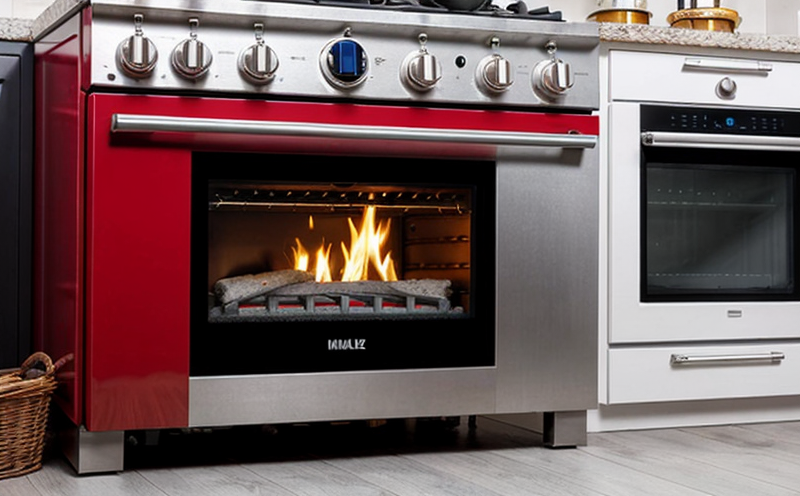Reaction-to-Fire Testing of Appliance Electrical Components
In today's fast-evolving appliance industry, ensuring the safety and reliability of electrical components is paramount. Reaction-to-fire (RTF) testing plays a critical role in assessing how well these components perform under fire conditions. This test evaluates whether materials will ignite easily or continue to burn when exposed to flames, thereby preventing potential hazards within household appliances.
Household appliances such as stoves, ovens, and cooking hobs are prime examples of products that must undergo rigorous RTF testing before being made available for consumer use. These tests help identify any potential risks associated with the materials used in manufacturing these components. By understanding how different materials behave during a fire event, manufacturers can make informed decisions about material selection to enhance product safety.
The ASTM E648-21 standard serves as a benchmark for RTF testing procedures. According to this international guideline, samples of the electrical component are exposed to controlled flame exposure conditions in an appropriately designed furnace. The duration and intensity of the flames depend on factors like the size and nature of the sample being tested. After the test concludes, analysts carefully examine the material's reaction—whether it ignites, continues burning uncontrollably, or extinguishes itself.
Understanding the results from RTF testing is crucial for ensuring compliance with relevant regulations. For instance, Directive 2014/35/EU requires manufacturers to demonstrate that their products meet stringent safety standards when used within EU member states. By incorporating RTF testing into your quality assurance process early on in product development, you can ensure that all aspects of the appliance are up-to-standard.
RTF testing also aids R&D teams by providing valuable insights into material performance under real-world fire scenarios. This information helps refine future designs and improve overall safety features without compromising functionality. With an increasing focus on sustainability, RTF tests can help identify more environmentally friendly alternatives that maintain high performance levels even during extreme conditions.
Why Choose This Test
- Ensure Compliance: Stay ahead of regulatory requirements by conducting RTF testing early in the design process.
- Increase Safety: Protect users from potential risks associated with flammable materials used in appliance electrical components.
- Enhance Reputation: Demonstrate a commitment to product safety and quality, boosting consumer confidence and trust.
- Promote Innovation: Utilize test results to drive innovation in material selection and design improvements.
Scope and Methodology
The scope of RTF testing for appliance electrical components encompasses a wide range of materials commonly used, including plastics, rubber compounds, and certain metals. This type of assessment is particularly important because many household appliances contain complex assemblies where individual parts interact closely during operation.
The methodology involves preparing the sample according to specified ASTM E648-21 guidelines. Typically, this means cutting a representative piece from the larger component that accurately reflects its composition and expected performance characteristics under fire exposure. The sample is then placed into an appropriately calibrated furnace where it undergoes controlled flame exposure for a predetermined period.
During the test, analysts closely monitor various parameters such as ignition time, flame spread rate, smoke production levels, and residual char formation. These measurements provide crucial data points that indicate how well the material performed during the fire event. Afterward, detailed reports are generated summarizing these findings along with recommendations for improvements where necessary.
The methodology ensures consistency across all samples tested, allowing for accurate comparisons between different materials or versions of the same product. This standardized approach is essential not only for meeting regulatory requirements but also for facilitating effective communication among stakeholders involved in the development and production processes.
Eurolab Advantages
At Eurolab, our commitment to excellence in testing and certification spans across numerous sectors including fire safety. With decades of experience behind us, we pride ourselves on providing comprehensive RTF services tailored specifically for household appliance manufacturers.
- Expertise: Our team comprises highly skilled professionals with extensive knowledge in materials science and engineering.
- State-of-the-Art Facilities: Equipped with advanced testing equipment compliant with international standards, we ensure precise and reliable results.
- Comprehensive Reporting: Detailed reports include not only test outcomes but also expert interpretations and recommendations for improvement.
- Rapid Turnaround Times: We understand the importance of timely feedback in product development cycles; therefore, we strive to deliver results quickly without compromising quality.





